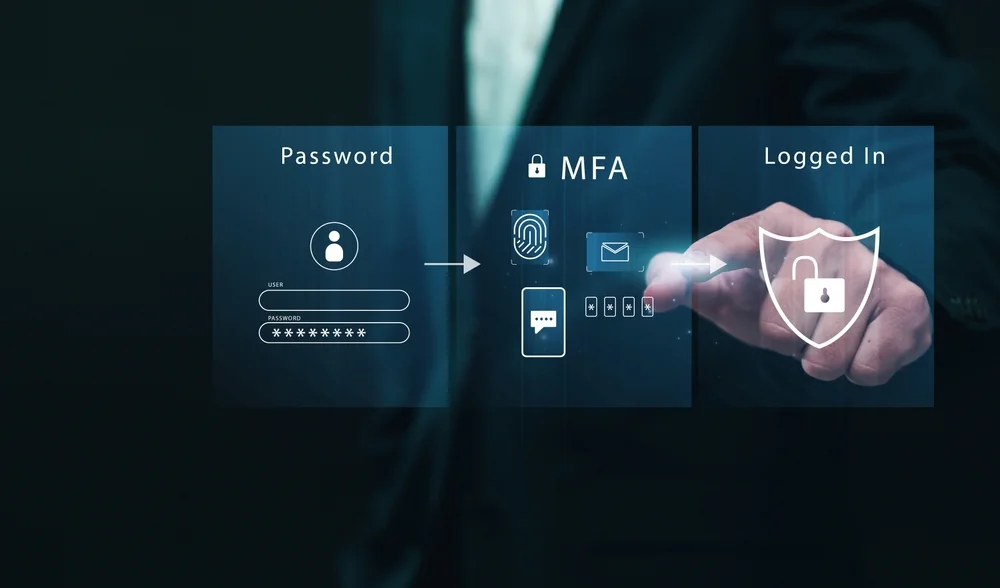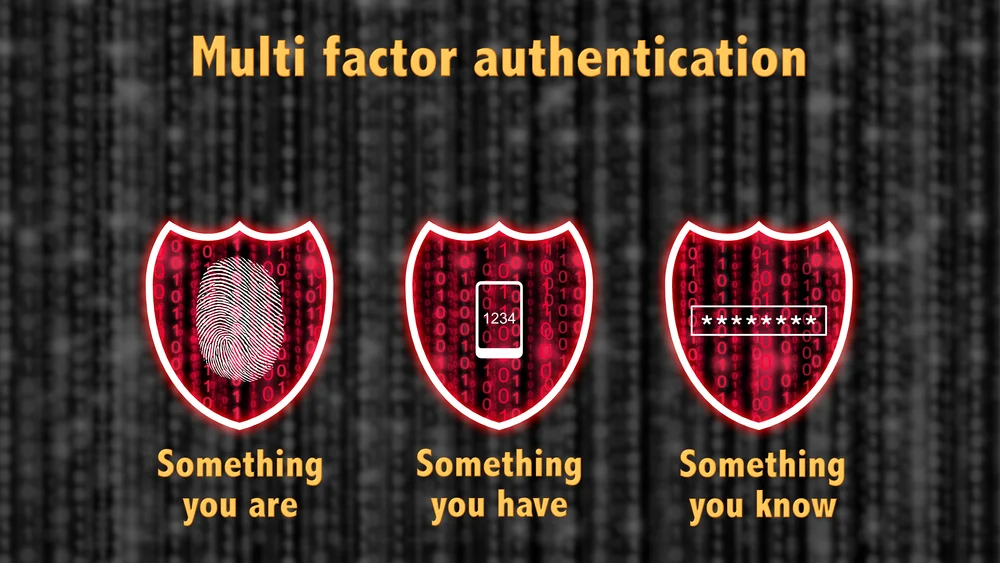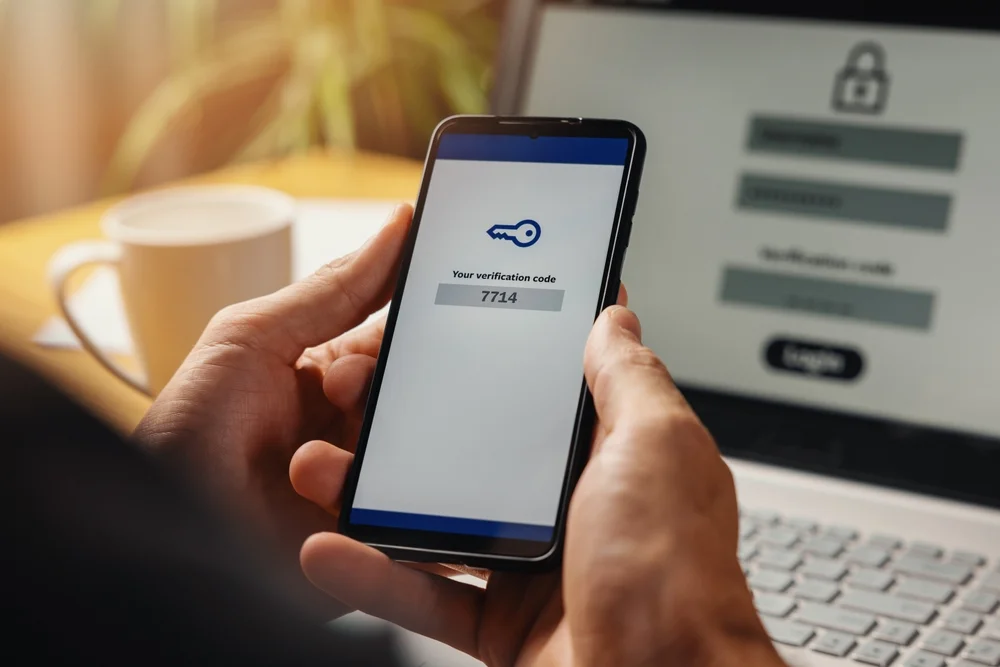Cybersecurity continues to be a top concern for organizations striving to safeguard sensitive data and maintain operational continuity.
With top cybersecurity threats like phishing attacks, ransomware attacks, and credential stuffing becoming increasingly sophisticated, traditional password protection is no longer enough. That’s where multi-factor authentication (MFA) plays a critical role in enhancing cybersecurity posture.
Multi-factor authentication enhances digital security by requiring users to verify their identity through multiple means before gaining access. Typically, this involves a combination of something the user knows (password), something the user has (authentication app or token), and something the user is (biometric verification).
Unlike single-factor authentication, MFA creates a significantly higher barrier to unauthorized access. This additional layer of verification drastically reduces the likelihood of compromised credentials being used maliciously.
Why Multi-Factor Authentication Matters in Cybersecurity
One of the core challenges in cybersecurity is the human element. Employees may reuse weak passwords, fall for social engineering attacks, or inadvertently expose credentials. MFA mitigates this risk by ensuring that even if a password is stolen, access to critical systems is not easily granted.
Cybercriminals are constantly developing new tactics. It is no longer a question of if an attack will occur, but when. That reality underscores the extreme importance of being proactive with cybersecurity threats.
Organizations that incorporate MFA stand a better chance of minimizing exposure.
MFA is also a foundational requirement in many compliance frameworks. Standards such as HIPAA, PCI-DSS, and GDPR either strongly recommend or mandate multi-factor authentication for access to sensitive systems. Implementing MFA not only strengthens your defense, but also demonstrates due diligence.
How Multi-Factor Authentication Works to Improve Cybersecurity
Multi-factor authentication relies on verifying at least two out of three categories:
-
Knowledge: Something you know, like a password or PIN.
-
Possession: Something you have, like a smartphone with an authentication app.
-
Inherence: Something you are, like a fingerprint or facial recognition.
When users attempt to log in, they must provide their password and verify with a second factor. For example, entering a time-based one-time password (TOTP) from an app like Google Authenticator, or approving a push notification on their phone.
Some organizations adopt hardware tokens for even stronger authentication. These physical devices generate unique codes or interact directly with machines. This highlights the vital role of hardware in an effective cybersecurity strategy.
Types of Multi-Factor Authentication for Cybersecurity
There are several methods for deploying MFA:
-
SMS-based codes: A one-time code sent to the user’s phone.
-
Email verification: A link or code sent via email.
-
App-based authenticators: TOTP or push notifications through mobile apps.
-
Hardware tokens: Physical devices such as YubiKeys.
-
Biometric verification: Fingerprint or facial recognition.
Each method has strengths and trade-offs. While SMS is convenient, it’s vulnerable to SIM-swapping attacks. App-based methods and hardware tokens offer better protection.
Cybersecurity Best Practices with Multi-Factor Authentication
Implementing MFA is an excellent first step, but it should be part of a broader strategy. Businesses should:
-
Regularly audit and update MFA policies.
-
Provide training to employees about MFA and its role in security.
-
Use MFA in conjunction with strong password policies and regular rotation.
-
Implement conditional access policies to enforce authentication under certain conditions.
Another essential component is pairing MFA with other tools. For example, understanding how antivirus and intrusion protection systems complement each other can elevate the overall security posture.
The Benefits of Implementing Two Factor Authentication
Organizations that deploy MFA can expect immediate advantages:
-
Stronger access control: Reduces the risk of unauthorized access.
-
Regulatory compliance: Helps meet cybersecurity mandates.
-
User trust: Enhances customer and employee confidence.
-
Data protection: Shields sensitive information from breaches.
The benefits of implementing two factor authentication for your business are clear. It not only defends against account compromise but also reinforces the message that data security is a priority.
Addressing Common Challenges of Multi-Factor Authentication in Cybersecurity Strategy
Despite its effectiveness, MFA can face resistance due to perceived complexity. Users may find it inconvenient or difficult to navigate. To address this, organizations should:
-
Choose user-friendly authentication methods.
-
Offer training and clear communication.
-
Use single sign-on (SSO) integrated with MFA for a seamless experience.
Keeping Your Business Secure
MFA should be deployed across all critical systems including email, cloud platforms, and VPNs. IT teams should also monitor for anomalies, such as repeated failed attempts or logins from suspicious locations.
Keeping your business secure with two factor authentication is not a one-time effort. It requires ongoing attention and adaptation to emerging threats. Consistent evaluation and refinement will help maintain its effectiveness.
Cybersecurity for Remote and Hybrid Workforces
As remote and hybrid work environments become standard, organizations must adapt their cybersecurity approaches. MFA is a crucial tool for protecting remote access points, cloud applications, and mobile devices.
Remote employees often access systems from personal devices or unsecured networks. Without MFA, these access points become prime targets for cybercriminals. MFA ensures that even in distributed environments, identity verification remains robust.
Combining MFA with secure VPNs, mobile device management (MDM), and advanced endpoint protection solutions can significantly reduce vulnerabilities.
Multi-Factor Authentication and Incident Response in Cybersecurity Planning
Incorporating MFA into your incident response plan strengthens your organization’s ability to contain and mitigate breaches. If login credentials are exposed, MFA can prevent attackers from escalating access or moving laterally across networks.
Incident response teams should test how MFA behaves under simulated attack scenarios. This helps fine-tune settings and identify gaps in authentication workflows. MFA logs can also provide valuable forensic data during post-incident investigations.
Why Cybersecurity Needs Continuous Improvement
Cybersecurity is not static. It demands ongoing evolution to keep up with threats. MFA should be regularly assessed for effectiveness and updated as needed. Organizations must stay informed about emerging technologies and threat vectors.
Evaluating new MFA methods, such as behavioral biometrics or risk-based authentication, can future-proof your security stack. Automation, AI-driven analytics, and contextual access controls can enhance MFA effectiveness.
Cybersecurity Trends: Multi-Factor Authentication in the Context of Zero Trust Architecture
Zero Trust security models are gaining traction as businesses move to the cloud. In a Zero Trust network framework, trust is never assumed. Every access request must be verified, regardless of origin.
MFA is a foundational element of Zero Trust. It ensures that identity verification is robust and continuous. Combined with micro-segmentation and least privilege principles, MFA plays a vital role in enforcing Zero Trust policies.
As companies adopt cloud-first strategies, embedding MFA into every layer of their cybersecurity architecture is a strategic imperative.
Cybersecurity in Industry-Specific Contexts
From financial institutions to manufacturers, every sector benefits from strong access controls. In highly regulated environments like finance, MFA helps protect sensitive client data and supports compliance. In manufacturing, where intellectual property is a prime target, MFA can prevent espionage and sabotage.
Different industries have unique requirements. For instance, IT support in Los Angeles can help you fight cybersecurity issues by tailoring MFA deployment to your specific operational environment.
Layered Defense: Multi-Factor Authentication as a Core Component of Cybersecurity
MFA is most effective when integrated into a layered security strategy. Firewalls, endpoint protection, employee training, and network monitoring all work in concert.
A layered approach reduces the impact of a single point of failure. If one control is breached, others still stand in the way of the attacker. This model is known as defense in depth, and MFA is a critical part of that system.
Make Multi-Factor Authentication a Cybersecurity Priority
Every business should take decisive action against today’s digital threats. Cybersecurity isn’t optional. It’s an essential investment in the continuity and integrity of your operations.
Start by assessing your current access protocols. Evaluate which systems are most vulnerable and implement MFA as a first line of defense. Expand your security stack to include endpoint monitoring and network intrusion detection. Educate your team about threat vectors and response procedures.
At Be Structured, we believe that proactive security measures make the difference between recovery and catastrophe.
Schedule a free consultation today and discover how our IT and security solutions can help protect what matters most.




